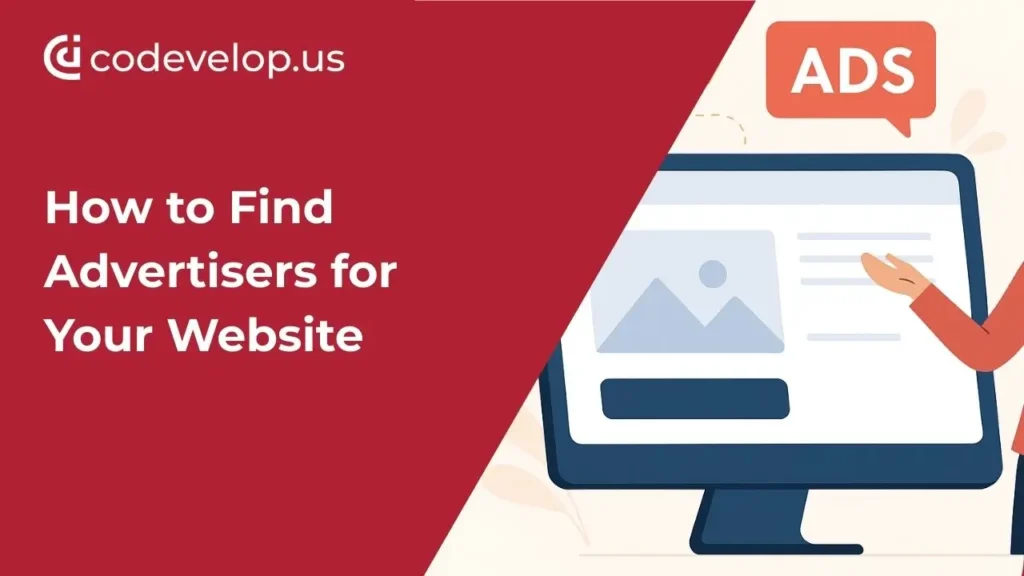Start With the Basics: Why Advertisers Even Care
If you’re running a website in the U.S. and pulling in steady traffic, there’s a good chance brands want to get in front of your readers. But here’s the thing—advertisers aren’t just chasing “big numbers.” They’re looking for relevant audiences.
For example, a food blog with 30,000 regular readers can be way more valuable to a kitchenware company than a random news site with 200,000 scattered visitors. Advertisers pay attention to audience fit, not just traffic volume. That’s why tools like Google Analytics matter—they help you prove who your readers are and why they’re worth targeting.
Test the Waters With Ad Networks
The easiest way to dip your toes into website advertising is through networks. Google AdSense is the most common starting point. It’s not going to make you rich, but it’s simple: copy-paste a snippet of code, and ads start appearing.
As your traffic grows, you can upgrade. Mediavine (requires ~50k sessions a month) and AdThrive (100k+) connect you with premium advertisers and pay much better than AdSense. Plenty of U.S. bloggers report doubling or tripling their revenue after switching.
Reach Out to Brands Directly
This is where many site owners hesitate, but it’s usually where the money is. Brands like working with niche publishers because it feels authentic.
A direct email works better than you might think:
“Hi [Name], I run [your website], which gets about [X visitors per month]. My audience overlaps with yours, and I’d love to explore sponsorship opportunities.”
Keep it short. Don’t overthink it. The more specific you can be about your audience, the better.
Use Marketplaces to Bridge the Gap
If cold emailing isn’t your thing, some platforms connect site owners with advertisers. BuySellAds, Ezoic, and similar marketplaces act like matchmakers—you list your site, brands browse, and if they’re interested, you work out a deal.
This route is lower pressure and gives smaller websites an easier entry into the advertising world.
Affiliate Marketing as Proof of Value
Affiliate programs—like Amazon Associates, CJ Affiliate, or Impact—aren’t exactly “advertising,” but they can help you prove your site has influence. If you can show a brand that you’ve already driven sales through an affiliate link, it’s a strong case for why they should pay you for direct placements.
Many bloggers use affiliate earnings as leverage when pitching to advertisers.
Make a Media Kit
Think of a media kit as a résumé for your website. It doesn’t need to be fancy—one or two pages with your traffic stats, audience demographics, ad options, and starting rates is enough. Canva has free templates that make this painless.
Having rates listed upfront makes you look professional and saves time during negotiations.
Real-World Examples
- Pinch of Yum started small with display ads before moving into brand sponsorships.
- TechCrunch began with smaller advertiser partnerships before scaling into a powerhouse.
- Countless U.S. niche bloggers—from fitness to finance—start with affiliates, then move to direct deals.
The pattern is clear: they didn’t wait for advertisers to knock. They reached out, tested networks, and built relationships.
Common Mistakes to Avoid
- Putting ads everywhere (readers leave, advertisers hate it).
- Accepting any advertiser, even if the product doesn’t fit your audience.
- Underselling your space—once you set “cheap” rates, it’s hard to raise them.
Wrapping It Up
Finding advertisers isn’t some secret formula. Start with ad networks to learn the ropes, then move into direct deals once you’ve built confidence. Show that your audience is valuable, stay professional, and treat it like a business.
Over time, ads can turn your website from a side project into a serious income stream. Want to turn your website into a revenue-generating machine? 🚀 Partner with Codevelop and let’s build strategies that bring advertisers straight to you!


